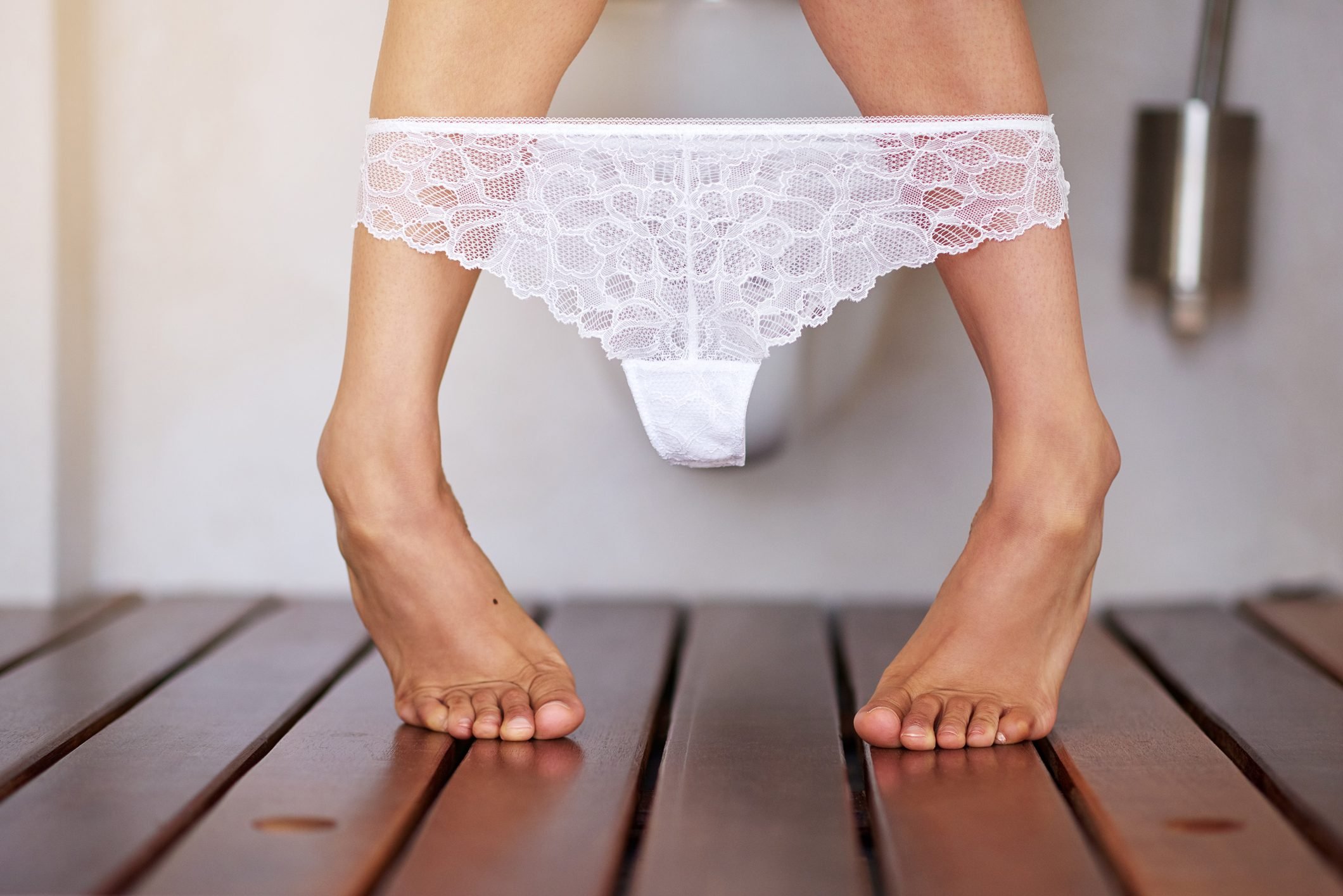Home>FAQs>Should You Wear Underwear When You Have A Yeast Infection


FAQs
Should You Wear Underwear When You Have A Yeast Infection
Published: July 31, 2023
Discover whether you should wear underwear when experiencing a yeast infection. Get answers to common questions about underwear and yeast infections.
(Many of the links in this article redirect to a specific reviewed product. Your purchase of these products through affiliate links helps to generate commission for Under-tec.com, at no extra cost. Learn more)
Table of Contents
- Introduction
- Understanding Yeast Infections
- Causes of Yeast Infections
- Common Symptoms of Yeast Infections
- The Role of Underwear in Yeast Infections
- Pros of Wearing Underwear During a Yeast Infection
- Cons of Wearing Underwear During a Yeast Infection
- Alternatives to Wearing Underwear During a Yeast Infection
- Conclusion
Introduction
Dealing with a yeast infection can be uncomfortable and frustrating. This common condition occurs when there is an overgrowth of yeast in the body, typically in the vagina for women. One question that often arises is whether or not it is advisable to wear underwear when experiencing a yeast infection.
Yeast infections, also known as candidiasis, are caused by the Candida fungus. Although they can affect anyone, women are more prone to developing this condition. Yeast infections can be triggered by a variety of factors, including hormonal changes, weakened immune systems, and certain medications. The symptoms of a yeast infection can range from mild itching and burning to more severe symptoms such as vaginal discharge and discomfort during intercourse.
When it comes to deciding whether or not to wear underwear during a yeast infection, there are various factors to consider. While wearing underwear can provide a sense of security and protection, there are also potential downsides to consider.
In this article, we will explore the pros and cons of wearing underwear during a yeast infection and discuss alternative options that may offer relief and comfort. Ultimately, it is important to listen to your body and make choices that align with your comfort and well-being.
Understanding Yeast Infections
Yeast infections are a common condition that affects many individuals, most commonly women. The Candida fungus, which is normally present in the body in small amounts, can multiply rapidly under certain conditions, causing an overgrowth and resulting in a yeast infection.
One of the primary causes of yeast infections is an imbalance in the vaginal pH levels. Normally, the acidic environment in the vagina helps keep the growth of yeast in check. However, factors such as hormonal changes, antibiotic use, diabetes, and a weakened immune system can disrupt this balance, allowing the yeast to thrive and leading to infection.
Yeast infections can also be classified into different types based on their location. The most common type is vaginal yeast infection, which occurs in the reproductive tract of women. Men can also get yeast infections, usually affecting the genital area. Other types of yeast infections can occur in the mouth, skin, and nails.
It’s important to note that yeast infections are not considered sexually transmitted infections, although they can be passed between sexual partners. It is possible for a person to develop a yeast infection without any sexual activity.
The symptoms of a yeast infection can vary depending on the location and severity of the infection. In the case of vaginal yeast infections, common symptoms include vaginal itching, burning, swelling, and a thick, white, cottage cheese-like discharge. Some individuals may also experience pain or discomfort during urination or sexual intercourse.
If you suspect you have a yeast infection, it is recommended to consult with a healthcare professional for an accurate diagnosis. They may perform a physical examination and collect a sample for laboratory testing to confirm the presence of a yeast infection.
Causes of Yeast Infections
Yeast infections are caused by an overgrowth of the Candida fungus, a type of yeast that naturally lives in the body. While small amounts of yeast are normal and usually harmless, certain factors can disrupt the delicate balance and lead to an overgrowth, resulting in a yeast infection.
One of the main causes of yeast infections is an imbalance in the vaginal pH levels. The vagina is naturally acidic, which helps keep the growth of yeast in check. However, certain factors can disturb this balance, including:
- Antibiotics: Taking antibiotics can kill the beneficial bacteria that normally keep yeast in check, allowing yeast to multiply and cause an infection.
- Hormonal changes: Hormonal fluctuations, such as those that occur during pregnancy, menstruation, or menopause, can disrupt the vaginal environment and increase the risk of developing a yeast infection.
- Diabetes: Individuals with poorly controlled diabetes have higher blood sugar levels, providing an ideal environment for yeast to thrive.
- Weakened immune system: A weakened immune system, whether due to certain medical conditions, medications, or lifestyle factors, can make individuals more susceptible to yeast infections.
- Tight clothing: Wearing tight-fitting clothing, especially underwear made from non-breathable materials, can create a warm and moist environment that promotes the growth of yeast.
- Sexual activity: While yeast infections are not classified as sexually transmitted infections, engaging in sexual activity can increase the risk of developing a yeast infection, especially if proper hygiene practices are not followed.
It’s important to note that yeast infections can occur in both women and men, although they are more common in women. In men, yeast infections often affect the genital area, causing symptoms such as itching, redness, and a rash.
By understanding the underlying causes of yeast infections, individuals can take steps to prevent them or reduce the risk of recurrence. Maintaining good hygiene, wearing breathable cotton underwear, avoiding tight-fitting clothing, and managing underlying health conditions can all contribute to maintaining a healthy vaginal environment and reducing the likelihood of developing a yeast infection.
Common Symptoms of Yeast Infections
Yeast infections can cause a range of uncomfortable symptoms, varying in intensity from mild to severe. The symptoms can differ depending on the location of the infection, but the most common type is vaginal yeast infection. Here are some of the most common symptoms:
- Vaginal itching and irritation: One of the hallmark symptoms of a yeast infection is intense itching in the vaginal area. This itching may be accompanied by redness and swelling, making daily activities uncomfortable.
- Abnormal vaginal discharge: A yeast infection may lead to an increase in vaginal discharge. The discharge may be thick, white, and resemble cottage cheese. It may also have a strong, yeasty odor.
- Burning sensation during urination: Some individuals with a yeast infection may experience a burning sensation while urinating. This can be quite painful and may indicate the presence of an infection.
- Painful intercourse: Yeast infections can make sexual intercourse painful or uncomfortable. The inflammation and irritation in the vaginal area can cause discomfort and soreness during sexual activity.
- Skin rash: In certain cases, yeast infections can occur on areas of the skin outside of the vagina. These infections may present as a red, itchy rash that can be found on the skin folds, such as the groin or under the breasts.
If you are experiencing any of these symptoms, it’s important to consult with a healthcare professional for an accurate diagnosis. They can rule out other potential causes of your symptoms and provide appropriate treatment. Self-diagnosis can be challenging, as some symptoms of yeast infections can resemble those of other conditions, such as bacterial vaginosis or sexually transmitted infections.
It’s worth noting that not everyone with a yeast infection will experience all of these symptoms. The severity of the symptoms can vary from person to person. For some individuals, the symptoms may be mild and manageable, while for others, they may be more severe and disruptive to daily life.
The Role of Underwear in Yeast Infections
When it comes to managing a yeast infection, the choice of underwear can play a role in both alleviating symptoms and preventing further irritation. Underwear acts as a protective barrier between the body and external factors, so it’s important to consider how it can impact the vaginal environment during a yeast infection.
On one hand, wearing underwear can provide a sense of security and protection. It helps absorb vaginal discharge and prevents direct contact of the sensitive skin with external substances. Additionally, underwear made from breathable materials like cotton can promote air circulation and reduce moisture, which can be beneficial in managing a yeast infection.
However, there are also potential downsides to wearing underwear during a yeast infection. Tight-fitting or synthetic underwear can trap moisture, creating a warm and moist environment that promotes the growth of yeast. This can exacerbate the symptoms and prolong the healing process. It can also cause further irritation and discomfort, making it harder for the body to recover.
Furthermore, some types of underwear, particularly those made from non-breathable fabrics or with added chemicals or dyes, can increase the risk of irritation or allergic reactions. For individuals with sensitive skin or those prone to recurrent yeast infections, choosing underwear made from natural and hypoallergenic materials is recommended.
Ultimately, the decision to wear underwear during a yeast infection may depend on personal comfort and preferences. If wearing underwear provides a sense of security and comfort, it can be worn as long as it is breathable and made from gentle materials. However, if the underwear is causing additional discomfort or worsening symptoms, it may be beneficial to explore alternative options.
It’s important to note that going commando, or not wearing any underwear, is a personal choice that may or may not be suitable for everyone. While it may allow for increased air circulation and reduce moisture, it may not be practical or comfortable for everyone in certain situations or activities.
Ultimately, the key is to listen to your body and make choices that promote comfort and healing. If you are unsure about whether to wear underwear during a yeast infection or have concerns about your symptoms, consult with a healthcare professional for guidance and personalized recommendations.
Pros of Wearing Underwear During a Yeast Infection
While the decision to wear underwear during a yeast infection may vary from person to person, there are some potential benefits to consider. Wearing underwear can offer a sense of security and protection, especially when managing the symptoms of a yeast infection.
1. Absorbs vaginal discharge: One of the primary benefits of wearing underwear during a yeast infection is that it can help absorb vaginal discharge. This can prevent the discharge from coming into contact with clothing and causing discomfort or embarrassment.
2. Creates a barrier: Underwear acts as a barrier between the body and external factors. It can help protect the sensitive vaginal skin from potential irritants, such as certain fabrics or materials, and reduce friction that may exacerbate symptoms.
3. Provides a sense of security: Many individuals find that wearing underwear during a yeast infection provides a sense of security and comfort. It can offer a psychological reassurance and may help individuals feel more at ease while going about their daily activities.
4. Prevents direct contact: Wearing underwear can help prevent direct skin-to-skin contact between the vaginal area and external substances. This can reduce the risk of further irritation and potentially assist in the healing process.
5. Promotes hygiene: Underwear can enhance personal hygiene during a yeast infection. It can help contain any discharge or excess moisture, making it easier to maintain cleanliness and prevent the spread of infection.
It’s important to note that the benefits of wearing underwear during a yeast infection may vary depending on the individual and the specific circumstances. Some individuals may find relief and comfort by wearing underwear, while others may find that going commando or opting for alternative options works better for them.
When choosing underwear to wear during a yeast infection, it’s essential to select breathable materials, such as cotton, that allow air circulation and minimize moisture buildup. Additionally, avoiding tight-fitting or synthetic underwear can help prevent further irritation and promote healing.
Ultimately, it’s crucial to listen to your body and make choices that align with your comfort and well-being. If wearing underwear during a yeast infection causes discomfort or worsens symptoms, it may be beneficial to explore alternative options or consult with a healthcare professional for personalized advice.
Cons of Wearing Underwear During a Yeast Infection
While wearing underwear during a yeast infection can have certain benefits, there are also potential downsides to consider. It’s important to be aware of these cons to make an informed decision that suits your individual needs and comfort level.
1. Traps moisture: Depending on the type of underwear and fabric, wearing underwear during a yeast infection can trap moisture. This can create a warm and moist environment, which is ideal for the growth of yeast. The additional moisture can exacerbate symptoms and prolong the healing process.
2. Increases heat and friction: Tight-fitting underwear or underwear made from non-breathable materials can increase heat and friction in the vaginal area. This can worsen the symptoms of a yeast infection, leading to increased discomfort and irritation.
3. Hinders air circulation: Certain types of underwear, particularly those made from synthetic fabrics, can restrict air circulation in the vaginal area. Proper air circulation is important for maintaining a healthy and balanced vaginal environment, and a lack of it can contribute to the growth of yeast.
4. Potential for irritation: Underwear made from certain materials, such as lace or synthetic fabrics, can potentially irritate the sensitive vaginal skin during a yeast infection. This can further aggravate symptoms and delay the healing process.
5. Allergic reactions: Some individuals may be sensitive or allergic to certain fabrics or chemicals used in the manufacturing of underwear. Wearing such underwear during a yeast infection can lead to additional irritation, discomfort, and potentially allergic reactions.
It’s worth noting that the cons of wearing underwear during a yeast infection may not be applicable to everyone. Some individuals may not experience any negative effects or may find that wearing underwear provides comfort and protection.
If you do choose to wear underwear during a yeast infection, it is important to select underwear made from breathable materials, such as cotton, to promote air circulation and reduce moisture. Additionally, opting for loose-fitting styles can help prevent friction and irritation.
Ultimately, personal comfort and individual preferences should guide your decision. If wearing underwear during a yeast infection causes discomfort or worsens symptoms, it may be worth considering alternatives such as going commando or wearing loose-fitting, breathable bottoms.
It’s always a good idea to consult with a healthcare professional if you have concerns or questions about wearing underwear during a yeast infection. They can provide personalized advice and guidance based on your specific situation.
Alternatives to Wearing Underwear During a Yeast Infection
For those who prefer not to wear underwear during a yeast infection or find it uncomfortable, there are alternative options to consider. These alternatives can provide relief and help maintain a healthy vaginal environment while managing the symptoms of a yeast infection.
1. Going commando: Going commando, or not wearing any underwear, can allow for increased air circulation and reduce moisture in the vaginal area. This can help create a drier environment, making it less favorable for the growth of yeast. However, it’s important to note that going commando may not be practical or comfortable for everyone in certain situations or activities.
2. Wearing loose-fitting bottoms: Opting for loose-fitting bottoms, such as skirts or loose pants, can provide a breathable alternative to underwear. These types of clothing allow for better air circulation and can help minimize moisture buildup, contributing to a healthier vaginal environment.
3. Choosing breathable fabrics: When selecting bottoms or clothing, choose materials that are breathable and moisture-wicking, such as cotton. These fabrics allow air to circulate and help keep the vaginal area dry, reducing the risk of yeast overgrowth and irritation.
4. Using panty liners: Panty liners can provide an extra layer of protection and absorb any discharge that occurs during a yeast infection. However, it’s important to choose panty liners made from breathable materials and change them frequently to prevent moisture buildup.
5. Practicing good hygiene: Maintaining good hygiene is crucial when managing a yeast infection. Regularly washing the genital area with mild, unscented soap and warm water can help keep the area clean and prevent the spread of infection. Additionally, avoiding harsh soaps, douching, and using scented products can help prevent further irritation.
6. Consulting with a healthcare professional: If you have concerns about alternatives to wearing underwear during a yeast infection, it’s always a good idea to consult with a healthcare professional. They can provide personalized advice and recommendations based on your specific situation and preferences.
Remember, everyone’s body is different, and what works for one person may not work for another. It’s essential to listen to your body, consider your comfort level, and make choices that promote healing and well-being during a yeast infection.
Conclusion
Dealing with a yeast infection can be uncomfortable, and the decision of whether or not to wear underwear during this time is a personal one. While wearing underwear can provide a sense of security and protection, there are potential drawbacks to consider as well.
Wearing underwear made from breathable materials, such as cotton, can help absorb vaginal discharge and create a barrier between the body and external irritants. This can offer relief for some individuals and promote a healthier vaginal environment. However, tight-fitting or non-breathable underwear can trap moisture and increase heat and friction, exacerbating symptoms and prolonging the healing process.
For those who find wearing underwear uncomfortable or prefer alternatives, options such as going commando or wearing loose-fitting bottoms made from breathable fabrics can provide relief and promote air circulation. It’s also important to maintain good hygiene practices and consult with a healthcare professional for personalized advice.
Ultimately, the decision to wear underwear during a yeast infection should prioritize individual comfort and preferences. Listening to your body and making choices that promote healing and well-being is key. It’s important to note that what works for one person may not work for another, so it’s essential to find the approach that works best for you.
If you have any concerns or questions about managing a yeast infection, it’s always recommended to consult with a healthcare professional. They can provide accurate diagnosis, offer appropriate treatment options, and address any specific concerns you may have.










